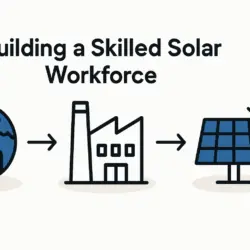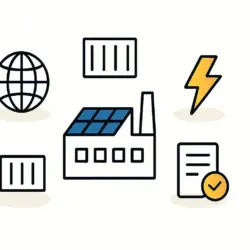Sierra Leone solar project brings clean energy to underserved regions
Sierra Leone has taken a significant step toward improving electricity access with the launch of the Regional Emergency Solar Power Intervention Project (RESPITE). Backed by the World Bank, this transformative initiative will bring clean, renewable energy to underserved regions across the nation, laying the groundwork for a more sustainable future.
The project is part of a larger initiative across four West African countries—Sierra Leone, Liberia, Chad, and Togo. It aims to tackle urgent electricity needs by providing reliable, renewable energy solutions crucial for the socio-economic development of these regions.
In Sierra Leone, the RESPITE project will focus on installing solar mini-grids in 28 communities, directly benefiting thousands of households, businesses, and public facilities. By harnessing the region’s abundant solar energy, these installations are expected to provide consistent power, significantly enhancing living standards and economic activity.
At the launch event, President Julius Maada Bio underscored the project’s importance for Sierra Leone’s development. “This project will bring electricity to many communities that have never had it before. It will improve the lives of our people and help our country grow,” he stated. For more insights, you can explore the Sierra Leone Solar News Archives.
World Bank support powers Sierra Leone solar project
The World Bank has been instrumental in this ambitious project, offering both financial support and technical expertise. Pierre Laporte, the World Bank Country Director, reaffirmed the organization’s commitment to Sierra Leone’s energy goals, emphasizing the critical role of electricity in economic growth. “We are proud to support Sierra Leone in this important project. Access to electricity is essential for economic growth and development. This project will help Sierra Leone move towards a more sustainable and resilient energy future,” said Laporte.
The RESPITE project is poised to transform Sierra Leone’s energy landscape. Currently, only about 20% of the population has electricity access, with many relying on costly, polluting diesel generators.
The new solar mini-grids will offer a cleaner, more affordable alternative, marking a pivotal shift away from diesel to mini solar power and toward a renewable energy future.
Community benefits from Sierra Leone solar project
The solar mini-grids will deliver numerous benefits to the communities they serve. For the first time, households will have easy, reliable electricity, improving their quality of life and unlocking new economic opportunities in Sierra Leone. Businesses can operate more efficiently, while public facilities like schools and health centers will have the power needed to function at their best.
A key feature of the RESPITE project is its focus on sustainability. The mini-grids will be managed by local communities to encourage long-term success and empowerment. This approach will not only create jobs but also build local expertise in the renewable energy sector. For additional context on similar impactful projects, visit Life-Saving Solar Power Hospitals Across Sierra Leone.
The project will also help Sierra Leone reduce its greenhouse gas emissions. By transitioning from diesel generators to solar power, the country will substantially cut its carbon footprint, helping it meet international climate commitments.
Future outlook for Sierra Leone solar project
The launch of the RESPITE project marks the beginning of Sierra Leone’s renewable energy journey. The government, with its ambitious goal of achieving universal electricity access by 2030, plans to further expand its renewable energy initiatives. Solar power, alongside other renewable sources like large-scale solar farms and hydroelectric projects, will be key to achieving this target.
These efforts are part of Sierra Leone’s broader strategy to diversify its energy mix and reduce its reliance on fossil fuels. The RESPITE project represents a major milestone, setting Sierra Leone on a path to becoming a leader in renewable energy in West Africa. With continued support from the World Bank and other partners, the initiative is poised to deliver lasting benefits, improving the quality of life for the people of Sierra Leone and advancing the country’s development goals.



